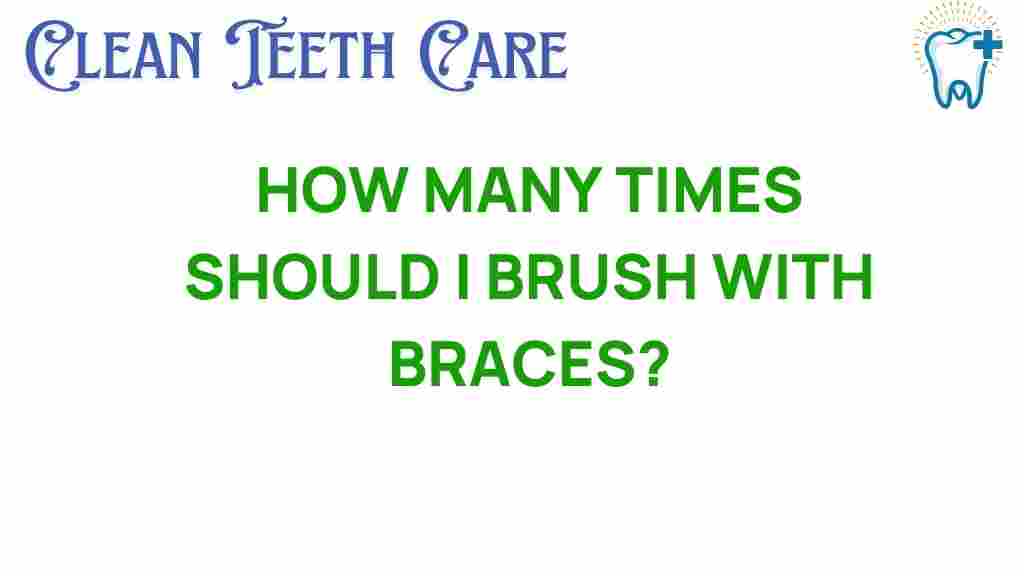The Essential Guide to Brushing with Braces: How Often is Enough?
Getting braces is an exciting step towards achieving that perfect smile transformation. However, with braces comes the important responsibility of maintaining excellent oral hygiene. Proper dental care is essential to ensure that your teeth and gums remain healthy throughout your orthodontic journey. In this comprehensive guide, we’ll cover everything you need to know about brushing frequency, techniques, tips, and the overall importance of oral hygiene with braces.
Understanding the Importance of Oral Hygiene with Braces
When you have braces, your teeth cleaning routine becomes more critical than ever. Braces create additional nooks and crannies where food particles and plaque can accumulate. This can lead to various dental issues if not managed properly:
- Cavities: Food trapped around brackets and wires can cause tooth decay.
- Gum Disease: Poor oral hygiene can lead to swollen and bleeding gums.
- Discoloration: Failure to clean properly can result in stains on your teeth.
To avoid these problems, understanding the right brushing frequency and techniques is crucial.
How Often Should You Brush with Braces?
Brushing frequency is fundamental in braces maintenance. The American Association of Orthodontists recommends brushing your teeth at least twice a day for optimal oral hygiene. However, when you have braces, you might need to brush even more often:
- After Every Meal: Ideally, you should brush your teeth after every meal to remove food particles and plaque.
- Before Bed: Always brush before sleeping to prevent plaque buildup overnight.
- After Snacks: If you have snacks between meals, consider rinsing or brushing afterward.
In total, this could mean brushing three to five times a day, especially if you want to maintain a healthy mouth during your orthodontic treatment.
Step-by-Step Guide to Brushing with Braces
Proper brushing technique is vital when you have braces to ensure that every surface of your teeth is cleaned effectively. Here’s a step-by-step guide to help you:
1. Gather Your Supplies
Before you begin, make sure you have the following:
- Soft-bristled toothbrush
- Fluoride toothpaste
- Interdental brushes or floss threaders (for cleaning between braces)
- Antimicrobial mouthwash (optional)
2. Rinse Your Mouth
Start by rinsing your mouth with water to loosen any food particles stuck in your braces.
3. Position Your Toothbrush
Hold your toothbrush at a 45-degree angle to your gums. This angle will help you get under the brackets and clean effectively.
4. Brush the Braces
Gently brush the brackets and wires in a circular motion. Pay close attention to:
- The front surfaces of your teeth
- The back of your teeth
- The chewing surfaces
5. Clean Between the Teeth
Use interdental brushes or floss threaders to clean between the braces and around the brackets. This step is essential for removing plaque and food particles that your toothbrush may miss.
6. Rinse Thoroughly
After brushing, rinse your mouth again to remove any residual toothpaste and dislodged food particles.
7. Use Mouthwash (Optional)
Using an antimicrobial mouthwash can help kill bacteria and freshen your breath, adding an extra layer of protection for your oral health.
Tips for Effective Brushing with Braces
To enhance your dental care routine while wearing braces, consider the following tips:
- Choose the Right Toothbrush: A soft-bristled toothbrush can be gentler on your gums and braces.
- Consider an Electric Toothbrush: These can be more effective at removing plaque.
- Use Orthodontic Wax: If your braces irritate your gums, using orthodontic wax can provide relief.
- Regular Dental Checkups: Visit your orthodontist regularly for adjustments and professional cleanings.
Troubleshooting Common Brushing Issues
Even with the best intentions, you may encounter challenges while maintaining oral hygiene with braces. Here are some common issues and how to address them:
1. Difficulty Reaching Certain Areas
If you find it hard to reach certain spots, try using an interdental brush or a floss threader to clean those areas. These tools can help you navigate around brackets and wires more easily.
2. Sensitive Gums
If your gums are sensitive, ensure you are using a soft-bristled toothbrush and brushing gently. You might also want to switch to a toothpaste designed for sensitive teeth.
3. Bad Breath
Bad breath can be a sign of trapped food particles or plaque. Increase your brushing frequency and consider using mouthwash for extra freshness. If the problem persists, consult your orthodontist.
Maintaining Your Braces
In addition to brushing, there are other essential aspects of braces maintenance that you should keep in mind:
- Avoid Certain Foods: Steer clear of hard, sticky, or chewy foods that can damage your braces.
- Use a Mouthguard: If you participate in sports, wear a mouthguard to protect your braces and teeth.
- Stay Hydrated: Drinking plenty of water can help wash away food particles and keep your mouth moist.
Conclusion
Brushing with braces is an essential part of your oral hygiene routine and overall orthodontics experience. By brushing frequently and using the right techniques, you can ensure that your teeth remain healthy and free from cavities and gum disease. Remember, the key to a successful smile transformation is consistent dental care and regular visits to your orthodontist.
For more tips on maintaining your oral health during orthodontic treatment, you can check out this helpful resource here. If you’re looking for professional dental care, make sure to consult with your orthodontist to address any concerns.
With dedication and the right practices, you will be well on your way to achieving a beautiful, healthy smile!
This article is in the category Hygiene and created by CleanTeethCare Team
